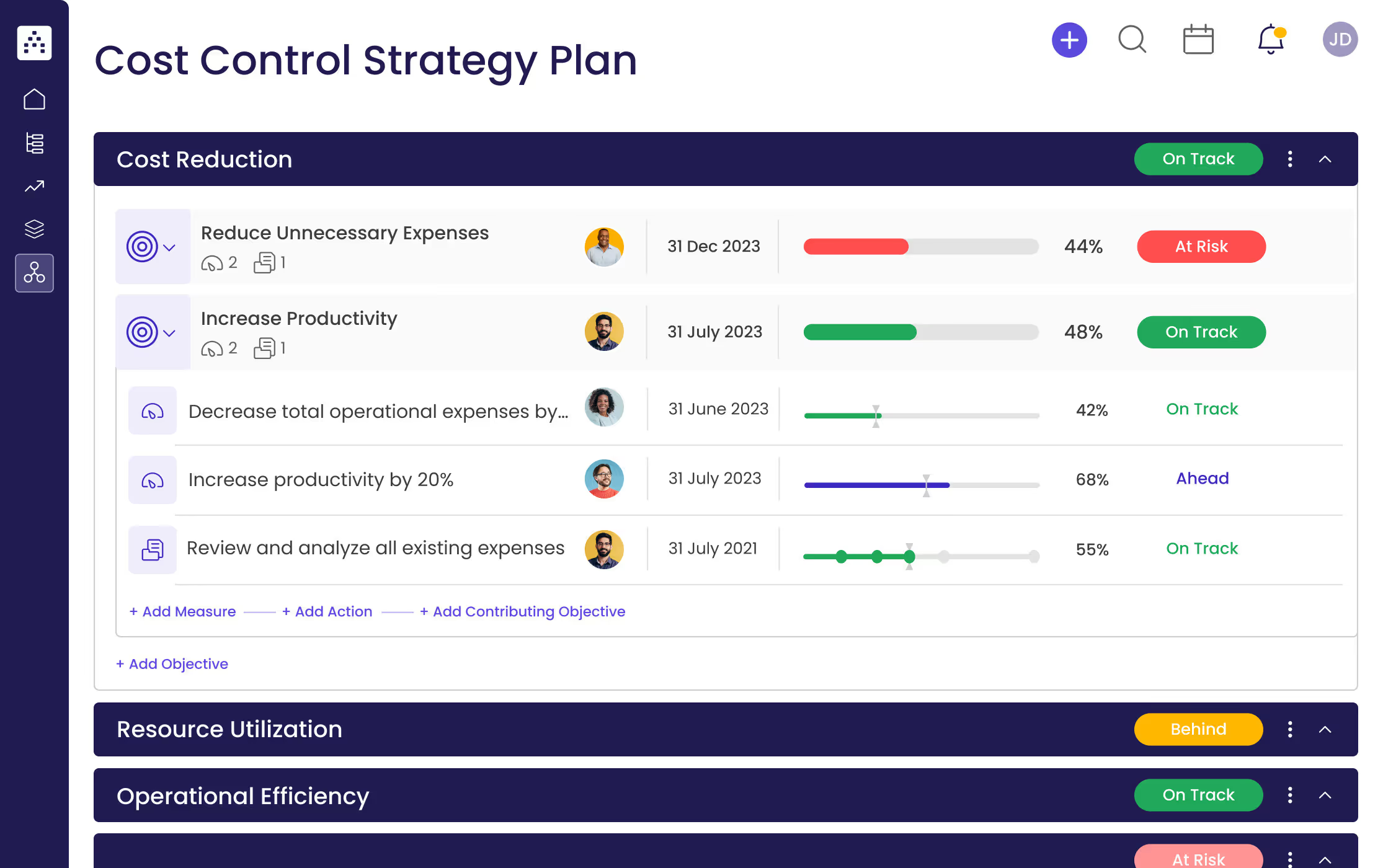What is a Cost Control Strategy Plan?
A cost control strategy plan outlines the projects, objectives, and actions that a business or organization takes to reduce unnecessary expenses and increase productivity. It also includes measurable targets (KPIs) to track progress and ensure that objectives are achieved. The plan is designed to help businesses and organizations control their costs and boost their overall financial performance.
What's included in this Cost Control Strategy Plan template?
- 3 focus areas
- 6 objectives
- 6 projects
- 6 KPIs
Each focus area has its own objectives, projects, and KPIs to ensure that the strategy is comprehensive and effective.
Who is the Cost Control Strategy Plan template for?
This cost control strategy plan template is designed to help finance teams and other business units of the organization create a plan to control their costs. It can also be used by operations teams, managers, and other stakeholders to develop a comprehensive cost-reduction strategy that is tailored to their organization's needs and goals.
1. Define clear examples of your focus areas
A focus area is the primary area of your cost control strategy that you are targeting. Examples of focus areas include cost reduction, resource utilization, and customer retention. You should also consider any other areas of your business that you can optimize to reduce costs and increase efficiency.
2. Think about the objectives that could fall under that focus area
Objectives are the specific goals that you want to achieve with your cost control strategy. They should be measurable and clearly defined so that you can track your progress and measure your success. For example, under the focus area of cost reduction, your objectives could include reducing unnecessary expenses and increasing productivity.
3. Set measurable targets (KPIs) to tackle the objective
KPIs (key performance indicators) are the metrics that you use to measure the success of your objectives. Examples of KPIs include decrease in operational expenses, increase in productivity, decrease in employee turnover rate, and increase in customer satisfaction and loyalty. Each KPI should have an initial value, target value, and unit of measurement.
An example of a KPI for the focus area of Cost Reduction could be: Decrease total operational expenses by 10% .
4. Implement related projects to achieve the KPIs
Projects (actions) are the specific initiatives that you need to take in order to achieve your KPIs. Examples of projects include reviewing and analyzing existing expenses, utilizing automation and technology, implementing a flexible and efficient scheduling system, and creating customer loyalty programs.
5. Utilize Cascade Strategy Execution Platform to see faster results from your strategy
Cascade Strategy Execution Platform is a powerful tool that helps teams create, manage, and track their cost control strategy. It allows you to define objectives, set measurable targets (KPIs), and implement related projects to achieve those goals. With Cascade, you can quickly see results from your cost control strategy and optimize it for better performance.


